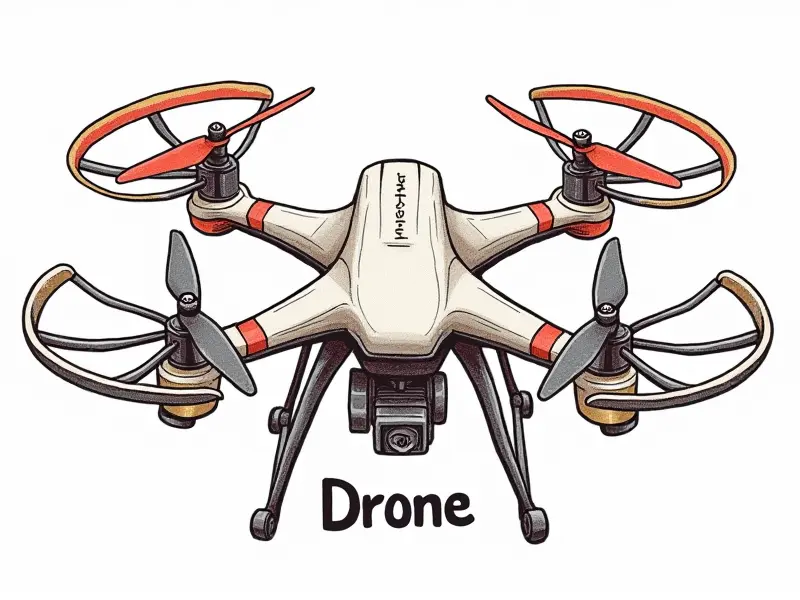How to plan flight paths?

Optimize Your Flight Paths in Minutes
Efficient flight path planning is crucial for maximizing the performance and safety of your aerial vehicles. Whether you're flying drones, quadcopters, or RC airplanes, understanding how to optimize your routes can save time, reduce fuel consumption, and enhance overall mission success.
Mastering Efficient Drone Route Optimization
Drones are versatile tools used for a variety of applications, from aerial photography to delivery services. To get the most out of your drone missions, it's essential to plan efficient flight paths that take into account factors such as wind direction, battery life, and airspace regulations.
- Wind Direction: Plan routes that minimize headwinds and maximize tailwinds for optimal speed and efficiency.
- Battery Life: Ensure your drone has enough power to complete the mission without needing a mid-flight recharge.
- Airspace Regulations: Check local laws and restrictions before flying in any area.
Plan Flawless Quadcopter Missions Fast
Quadcopters are popular among hobbyists and professionals alike due to their maneuverability and stability. To plan flawless quadcopter missions, consider the following tips:
- Mission Objectives: Clearly define what you want to achieve with each flight.
- Flight Zones: Identify safe areas for takeoff and landing.
- Safety Checks: Perform thorough pre-flight checks to ensure all systems are functioning correctly.
Simplify Your FPV Racing Route Strategy
First-person view (FPV) racing is an exhilarating sport that requires precise route planning. Here’s how you can simplify your strategy:
- Route Mapping: Use GPS and mapping software to create detailed routes.
- Pilot Training: Practice flying in different conditions to improve reaction times and decision-making skills.
- Race Analysis: Review past races to identify areas for improvement.
Ace Airplane Flight Paths with Ease
Flying airplanes requires careful planning to ensure a smooth and safe journey. Here are some tips to help you ace your flight paths:
- Weather Conditions: Always check the weather forecast before flying.
- Air Traffic Control (ATC): Coordinate with ATC for clearance and updates.
- Fuel Management: Plan your route to avoid running out of fuel mid-flight.
RC Helicopter Path Planning 101
Planning routes for RC helicopters involves understanding the unique challenges these aircraft face. Here’s a beginner's guide to path planning:
- Landing Zones: Identify suitable landing spots that are safe and accessible.
- Obstacle Avoidance: Scan your environment for potential obstacles like trees or buildings.
- Battery Monitoring: Keep an eye on battery levels to prevent unexpected landings.
Maximize Your FPV Drone Race Strategy
To maximize performance in FPV drone races, consider these strategic planning tips:
- Race Course Analysis: Study the course layout and identify key sections for speed and maneuverability.
- Drone Setup: Optimize your drone’s configuration for maximum performance.
- Pilot Focus: Maintain focus throughout the race to react quickly to changes in the environment.
Beginner's Guide to Smart Drone Routing
If you're new to drone routing, here are some basic steps to get started:
- Understand Your Drone: Familiarize yourself with your drone’s capabilities and limitations.
- Plan Ahead: Create a detailed plan before each flight, including mission objectives and safety measures.
- Practice Regularly: The more you practice, the better you'll become at planning efficient routes.
Plan Flawless Airplane Flight Trajectories
To ensure flawless airplane flights, consider these trajectory planning tips:
- Airspace Navigation: Use navigation tools to plan the most direct and safe route.
- Fuel Efficiency: Optimize your flight path for fuel efficiency by minimizing unnecessary maneuvers.
- Safety Protocols: Follow all safety protocols, including emergency procedures.
Strategic Drone Navigation Techniques
Navigating drones effectively requires a strategic approach. Here are some techniques to enhance your navigation skills:
- GPS Integration: Utilize GPS for precise location tracking and route planning.
- Sensor Fusion: Combine data from multiple sensors (e.g., cameras, accelerometers) for better situational awareness.
- Dynamic Path Adjustment: Be prepared to adjust your flight path in real-time based on changing conditions.
Streamline Your Drone Mission Planning
To streamline your drone mission planning process, follow these steps:
- Use Software Tools: Leverage software tools designed for route optimization and mission planning.
- Collaborate with Teammates: Work closely with other team members to ensure all aspects of the mission are covered.
- Continuous Improvement: Regularly review your plans and make adjustments based on feedback and new information.
Conclusion
Effective flight path planning is essential for successful aerial missions, whether you're flying drones, quadcopters, or RC airplanes. By mastering route optimization techniques, understanding environmental factors, and utilizing advanced tools, you can enhance the efficiency and safety of your flights. Whether you’re a beginner or an experienced pilot, these strategies will help you plan flawless flight paths every time.

